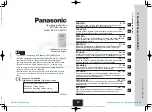
146
Redundant Transmission -
When using multiple networks,
CrossLock
defaults to “Bonding” mode, adding the
capability (with dynamic allocation) across the networks. Loss of any network results in a very fast adaptation to
the existing networks, but can result in short audio disruptions. In scenarios where all networks are unmetered
and of known good quality, changing to redundant mode can result in less disruption during a network loss. All
data is delivered on all networks simultaneously. This is an outgoing parameter only - in order to provide two-way
redundancy, this setting must be changed on both ends.
Encoder Throttle
- Some encoders, like Opus, provide the ability to reduce outgoing data rate in the presence of
network congestion. The default is to allow the
CrossLock
Manager license to throttle the encoder. This can be
defeated by setting this value to “No”.
Stun Server
-
CrossLock
uses its own Cloud Server (STUN) to determine the NAT status of each codec before
connection. This can be set to a different value than the main STUN server used to provide status to the
Remote
Connections
page. Default is always the Comrex server at
stun.comrex.com
.
Always Connect
- This option provides for
CrossLock
to be always connected to a destination. By its nature,
CrossLock
uses very little data so the network utilization of this mode (when idle) is very small. If you only connect
to one destination, having
CrossLock
always connected makes media connections faster, and provides an indication
of network status between the devices (“ready” light or
CrossLock
status). Most users should leave this setting off.
Note that this option is different than “
Always Connect To
” under
System Settings
. That option maintains an audio
connection, not just a
CrossLock
session.
Содержание ACCESS 2USB
Страница 1: ...Product Manual ...
















































